verginia-blog1
48 posts
Latest Posts by verginia-blog1

My wife has never had a cat/kitten so I got her one. This is… - (Source: http://www.miniurls.co/lJTF)

Yerres, Path Through the Old Growth Woods in the Park via Gustave Caillebotte
Size: 43x31 cm Medium: oil on canvas


Saint-Sauves-d'Auvergne via Armand Guillaumin


Egypto-Phoenician Silver Swivel Ring, C. 1000 BC
The thick solid silver shank tapering at the terminal and holding a solid silver scarab engraved with the falcon Horus in the center with the “Ames Scepter” and a protective Uraeus on either side, all standing on the Neb (Lord) sign.

Rue Mosnier decorated with Flags by Edouard Manet
Medium: oil on canvas

Dun Aengus - prehistoric fort at the edge of an 100 meter high cliff. The first construction goes back to 1100 BC; around 500 BC, the triple wall defenses were probably built along the western side of fort. Ireland
😆

Four Dancers by Edgar Degas
Medium: pastel
😊
800-Year-Old Skeleton Yields Genome of Deadly Infection

Keep reading
😊

Dancers in Light Blue (Rehearsing in the Dance Studio) by Edgar Degas
Medium: oil on canvas

2017 January 14
Stardust in the Perseus Molecular Cloud Image Credit & Copyright: Lorand Fenyes
Explanation: Clouds of stardust drift through this deep skyscape. The cosmic scene spans nearly 2 degrees across the Perseus molecular cloud some 850 light-years away. A triangle of dusty nebulae reflecting light from embedded stars is captured in the telescopic field of view. With a characteristic bluish color reflection nebula NGC 1333 is at left, vdB13 at bottom right, and rare yellowish reflection nebula vdB12 lies at the top. Stars are forming in the Perseus molecular cloud, though most are obscured at visible wavelengths by the pervasive dust. Still, hints of contrasting red emission from Herbig-Haro objects, the jets and shocked glowing gas emanating from recently formed stars, are evident in NGC 1333. At the estimated distance of the molecular cloud, legs of the triangle formed by the reflection nebulae would be about 20 light-years long.
∞ Source: apod.nasa.gov/apod/ap170114.html

Dancer with a Fan by Edgar Degas
Medium: pastel

page 590 of “Science and literature in the Middle Ages and the Renaissance” (1878)
😊

Hubble Chases a Small Stellar Galaxy in the Hunting Dog
by NASA’s Marshall Space Flight Center On a clear evening in April of 1789, the renowned astronomer William Herschel continued his unrelenting survey of the night sky, hunting for new cosmic objects — and found cause to celebrate! He spotted this bright spiral galaxy, named NGC 4707, lurking in the constellation of Canes Venatici or The Hunting Dog. NGC 4707 lies roughly 22 million light-years from Earth. NGC stands for “New General Catalogue of Nebulae and Clusters of Stars.” Over two centuries later, the NASA/ESA Hubble Space Telescope is able to “chase down” and view the same galaxy in far greater detail than Herschel could, allowing us to appreciate the intricacies and characteristics of NGC 4707 as never before. This striking image comprises observations from Hubble’s Advanced Camera for Surveys (ACS), one of a handful of high-resolution instruments currently aboard the space telescope. Herschel himself reportedly described NGC 4707 as a “small, stellar” galaxy; while it is classified as a spiral (type Sm), its overall shape, center, and spiral arms are very loose and undefined, and its central bulge is either very small or non-existent. It instead appears as a rough sprinkling of stars and bright flashes of blue on a dark canvas. The blue smudges seen across the frame highlight regions of recent or ongoing star formation, with newborn stars glowing in bright, intense shades of cyan and turquoise.
Ancient Buddha statue emerges in E. China reservoir

Archaeologists have started an underwater detection project after villagers in eastern China’s Jiangxi Province found the head of a Buddha statue emerging from the surface of a local reservoir.
The head was spotted at Hongmen Reservoir, Nancheng County in the city of Fuzhou, at the end of last year when a hydropower gate renovation project lowered water levels in the reservoir by more than 10 meters.
Judging from the head design, the statue was carved during the Ming Dynasty (1368-1644), said Xu Changqing, head of the provincial research institute of archaeology.
He said that the researchers had also found rectangular holes carved on the cliff, obvious marks of architecture, which meant that a temple could have existed there. Read more.

Lightweight Black Hole



GODS AND GODDESSES OF THE ANCIENT WORLD: Enki (Sumerian god of wisdom, water, magic, creation and chaos)
ENKI (also known as Ea, Enkig, Nudimmud, Ninsiku) was the Sumerian god of wisdom, fresh water, intelligence, trickery and mischief, crafts, magic, exorcism, healing, creation, virility, fertility, and art.
Iconography depicts him as a bearded man wearing a horned cap and long robes as he ascends the Mountain of the Sunrise; flowing streams of water run from his shoulders, emphasizing his association with life-giving water, while trees representing the male and female principle stand in the background. The streams are interpreted as the Tigris and Euphrates Rivers which, according to one myth, were formed from Enki’s semen. His name means “Lord of the Earth” and his symbols are the fish and the goat, both representations of fertility.
Read More
Article by Joshua J. Mark on AHE

Sunken for 2000 years Egyptian statue from the city THONIS-HERACLEION.
Read the story




Rhodochrosite with Quartz - Uchucchacua Mine, Lima Department, Peru
😁





CYGNSS rockets into orbit atop Pegasus
The first Cygnus launch from Cape Canaveral in nearly 10 years successfully placed NASA’s eight CYGNSS satellite into orbits Thursday, December 15. Pegasus, attached to the belly of Orbital ATK’s L-1011 Stargazer aircraft, lifted off from Cape Canaveral Air Force Station’s Skid Strip runway at 7:38am EDT. After reaching an altitude of 39,000 feet and within the 10 by 40 mile launch box, Pegasus was commanded for release, falling away from the mothership at 8:37am. Less than five seconds later, the first stage ignited, beginning a 14-minute climb to orbit for Pegasus and the eight CYGNSS satellites.
CYGNSS, short for Cyclone Global Navigation Satellite System, will use high-fidelity GPS signals to help forecasters better measure and predict hurricanes. In honor of the storm recently affecting the space coast, the Pegasus rocket launching CYGNSS was named Matthew. This was the 43rd launch of the Pegasus rocket, which made history in 1990 as the world’s first successfully-launched commercially-developed rocket vehicle. It remains the only air-launched rocket system in operation. CYGNSS was originally scheduled for launch Monday, but a faulty hydraulic pump in the rocket’s release mechanism promoted a delay into today. P/C: NASA.

😆
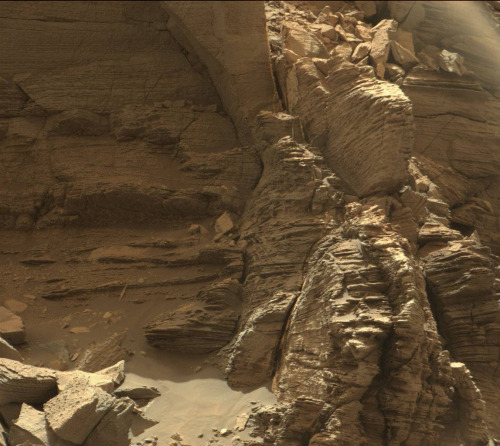


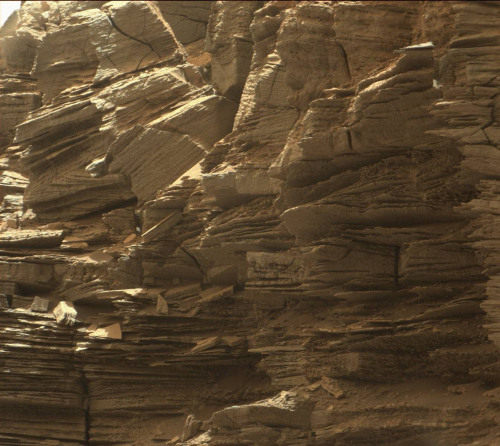
😊
Holiday Lights from the Universe
Although there are no seasons in space, some cosmic vistas invoke thoughts of a frosty winter landscape. Here are a few stellar images of holiday wonderlands from across the galaxy…

Located in our galaxy about 5,500 light years from Earth, this region is actually a “cluster of clusters,” containing at least three clusters of young stars, including many hot, massive, luminous stars.

The outstretched “wings” of this nebula looks like a soaring, celestial snow angel. Twin lobes of super-hot gas, glowing blue in this image, stretch outward from the central star. This hot gas creates the “wings” of our angel. A ring of dust and gas orbiting the star acts like a belt, clinching the expanding nebula into an “hourglass” shape.

At this time of year, holiday parties often include festive lights. When galaxies get together, they also may be surrounded by a spectacular light show. This pair of spiral galaxies has been caught in a grazing encounter. This region has hosted three supernova explosions in the past 15 years and has produced one of the most bountiful collections of super-bright X-ray lights known.

What do the following things have in common: a cone, the fur of a fox and a Christmas tree? Answer: they all occur in the constellation of the unicorn (Monoceros). Pictured as a star forming region, the complex jumble of cosmic gas and dust is about 2,700 light-years away.

Resembling festive lights on a holiday wreath, this Hubble Space Telescope image of a nearby spiral galaxy is an iconic reminder of the impending season. Bright knots of glowing gas light up the spiral arms, indicating a rich environment of star formation.

The Hubble Space Telescope captured two festive-looking nebulas, situated so as to appear as one. Intense radiation from the brilliant central stars is heating hydrogen in each of the nebulas, causing them to glow red…like a holiday light.
Make sure to follow us on Tumblr for your regular dose of space: http://nasa.tumblr.com
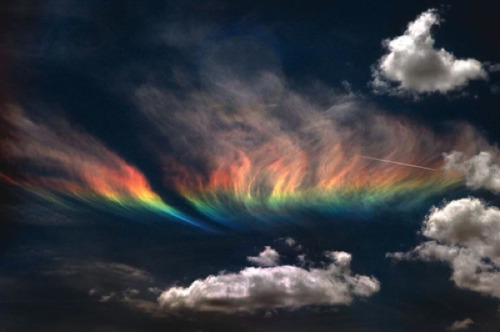

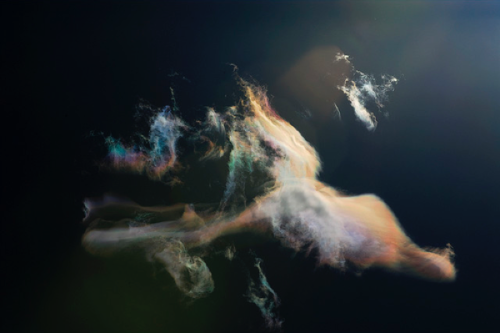
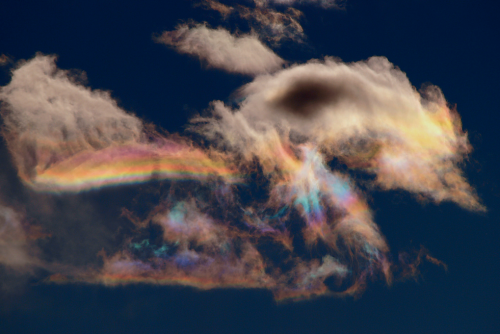
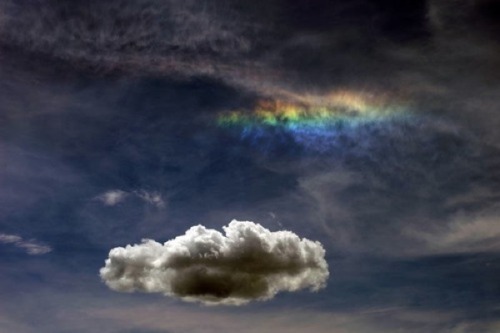
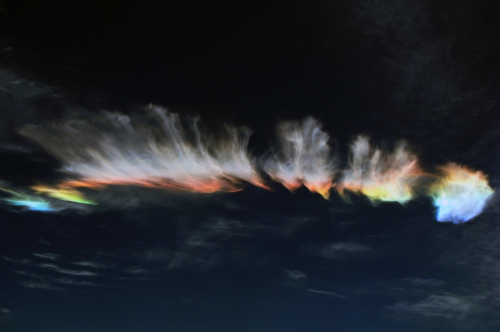

this atmospheric phenomenon is known as a circumhorizontal arc, which occurs when the sun is at least 58° above the horizon and the hexagonal ice crystals which form cirrus clouds become horizontally aligned.
(photos x, x, x, x, x, x, x. see also: more circumhorizontal arcs, asperatus clouds, mammatus clouds, polar stratospheric clouds and cloud iridescence)
😕😕😆

Massive Galaxy Cluster
Интересно
The Only Library Ever Recovered from Antiquity: The 1800 Scrolls of Herculaneum

The Villa of the Papyri is the name given to a private house that was uncovered in the ancient Roman city of Herculaneum. This city, along with nearby Pompeii, is perhaps best remembered for its destruction during the eruption of Mount Vesuvius in 79 AD. When the villa was rediscovered, archaeologists were lucky to discover a library of 1800 scrolls. This is the only known library to have survived from the Classical world.
Read more…



Fright Night, The Witches Hour & The Darkest Hour by DVerissimo - Like it? Find out more and buy HERE (t-shirts, phone & laptop cases, prints, pillows, stickers, mugs, calendars, etc…)
Check this post for ACTIVE COUPONS, SPECIAL OFFERS & DISCOUNTS (daily updated) —–> https://goo.gl/jBWO6E
Anahita and Ishtar: Connections to the Planet Venus

Anahita was a goddess associated with water, fertility, wisdom, warfare, and eventually the planet Venus. During the Achaemenid dynasty in Persia, she became incorporated into the Zoroastrian religion as a Yazata, a type of minor divinity. Her association with warfare and the planet Venus was not very prominent before the Achaemenid Period, leading some to conclude that her cult and persona may have become influenced by the goddess Ishtar. In becoming associated with Ishtar, she may have taken on the characteristics of a Venus god/Venus goddess, a type of god which appears to occur across cultures associated with the planet Venus.
Read more…

The Pork Butcher by Camille Pissarro
Size: 66x54 cm Medium: oil on canvas

The Boatyard at Saint Mammes by Alfred Sisley
Size: 38.8x56 cm

The Pork Butcher by Camille Pissarro
Size: 66x54 cm Medium: oil on canvas